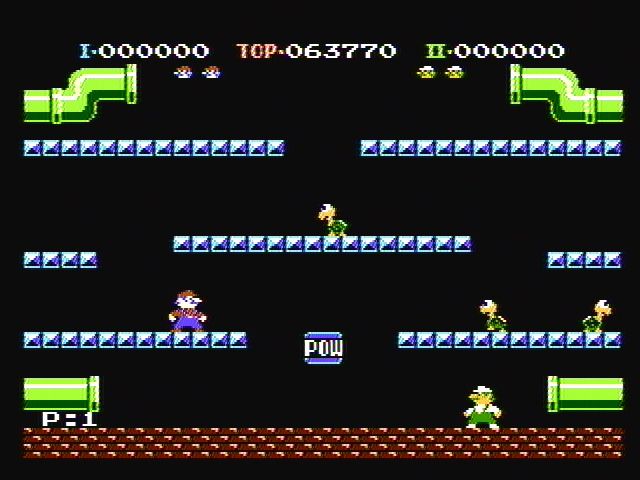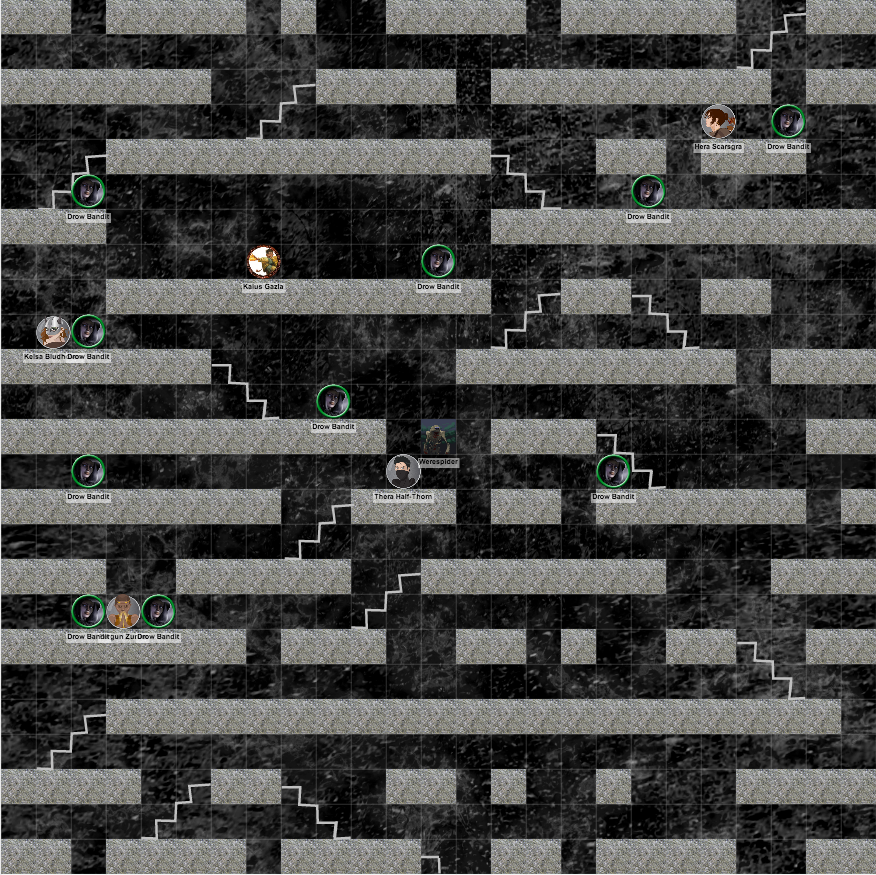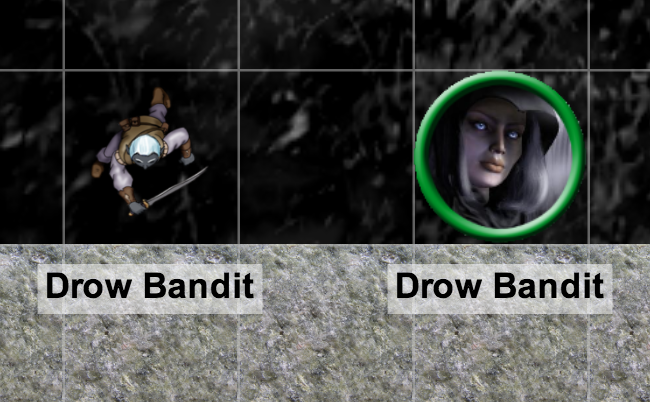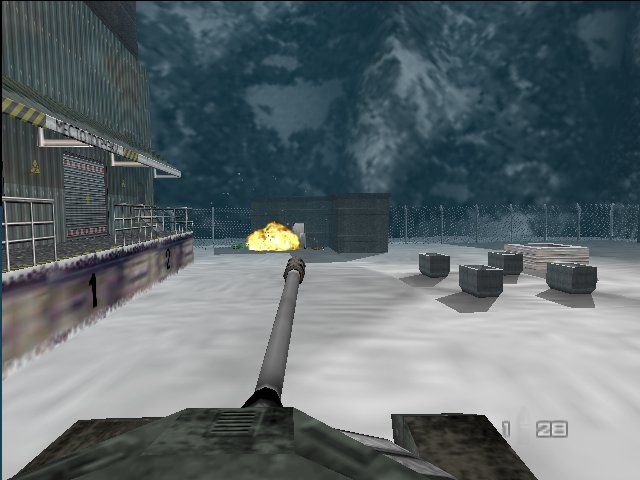Keeping Combat Fresh
If you’ve been playing RPGs as long as I have (22 years!), then you know keeping combat fresh ain’t easy especially when you’re playing with the same players for a good portion of that time. How can we continue to surprise, delight, scare, and challenge our players who have seen all our tricks a thousand times over?
This week I’ve had the privilege of recording a few Table Top Babble podcasts with successful designers like Mike Shea, M.T. Black, Tony Petrecca, and Jeff Stevens and I asked them this question. These people have written some of my favorite combat encounters ever so I couldn’t let the opportunity slip by.
They all had a common idea about spicing up combat. Encounters share common elements that can be changed to create a challenging and unique battle with minimal effort. Think of each of these variable elements as having a dial that you can turn to make every brawl distinct.
I’m going to breakdown each of these elements below to show how you can use them to make an encounter legendary. You only need to crank two or three of these to make a memorable battle. If you try to play with too many elements at once, combat can get bogged down in the details as players wait for their turns.
Visibility
Visibility has an enormous impact on combat. Take a look at all the beautiful creatures with darkvision, blindsight, termorsense, and more. Those abilities really mean something and can give players or monsters a leg up in a battle that’s shrouded in darkness (magical or mundane), fog, or illusion magic. Foes who are fully aware of their surroundings might toy with enemies who struggle to get bearings.
Tips For Playing With Visibility:
- Don’t make it frustrating. Let the players get creative and counteract the fact that they can’t see in creative ways, like creating clouds of flour to reveal invisible enemies or using the momentary light of a fireball spell to get a quick look at the area.
- If you’re playing on a virtual table use available dynamic lighting features.
- If you’re playing in person, consider running this particular encounter in the theater of the mind style. Using minis allows players with blind characters to see the position of other creatures and terrain so it ruins shrouded visuals.
Terrain
The landscape of an encounter can really change the way it is played. A few bits of interesting terrain will create better combat and storytelling in your games even if you aren’t sure how it will all come into play. Let the players surprise you! It’s not up to the DM to figure out how every brazier and tree can be a part of combat.
Tips For Playing With Terrain:
- Let players get creative. In fifth edition D&D advantage and disadvantage make improv easy by taking a lot of math out of the equation. If a character wants to try to fell a tree onto an ogre, let them try! Even if a task is nigh impossible, failure is a more interesting than saying no. Once your players realize the world is theirs to get creative in, you can lay out the terrain that makes sense in a location and let them decide how to use it.
- Terrain goes beyond the natural. Stairs, horse-drawn carts, and a ruined half-wall all count as terrain. Don’t just think about the natural world!
- Smart creatures lair in terrain that favors them. A room where a beholder sleeps might be spherical so the aberration can take advantage of its ability to fly and use eye beams on enemies as they slide to the floor. A white dragon’s lair could be covered in slippery ice that also allows the beast to walk upside down on the ceiling!
- While grids can make interacting with terrain easy, you can still rock terrain in a theater of the mind encounter. Simply write out some major terrain features on a piece of paper or index card and display it so the players know what they’re working with and against.
Space
Space defines the area where your encounter takes place. Is it a cramped dungeon hall with enemies attacking from either side? Is it an open forest sniper battle with hundreds of yards between enemies? Is it a battle that occurs as the combatants fall through the sky? All three are very different experiences. Cramped spaces make a battle feel desperate and wide open spaces make an encounter epic.
Tips For Playing With Space:
- Don’t forget the third dimension. Remember that creatures with flying speeds take advantage of height all the time (as do creatures that can’t fly). Adding height to your encounter makes it far more interesting, realistic, and memorable.
- You can add motion to your battle. Some of the most memorable action sequences in movies take place on the road, in the sky, or on a body of water. Your space can move if it’s a fight on rafts down river rapids or a chase across busy city rooftops.
- If you go wide, remember to fill in the terrain. You don’t want your combatants to spend the first three rounds of combat simply moving into range of one another.
Hazards and Traps
A great trap or hazard can make a battle memorable all on its own. The floor slowly falling out of a room, a pendulum scythe, or an enchanted tapestry can add delicious layers of complexity to an encounter. If play with this element, be sure you don’t turn up too many other dials, since tracking these things can be a lot of work.
Tips For Playing With Hazards and Traps:
- Roll initiative for most hazards and traps. That way you remember to use them. (To make it extra unpredictable, roll initiative for the trap at the start of each round.)
- Let players defeat hazards and traps creatively… or at least let them try!
- Most monsters are aware of the hazards and traps in their lairs and know how to avoid them.
- Have a list of simple hazards handy for those random encounters.
Customize Monsters
There’s so many ways to customize monsters that this could be its own series of blog posts. A recent tweet from M.T. Black shows us just 20 of those options:
Reskin monsters, add abilities (using pg. 280 and 281 of the DMG), give them spells, resistances, immunities, and vulnerabilities, and change damage types to create exciting beasties that don’t do what the players thought.
Tips For Customizing Monsters:
- Don’t worry too much about exact math. If you add a spell or ability that requires a DC, remember that fifth edition D&D’s bounded accuracy system means DC 10 is always easy, 15 is always moderate, and 20 is always hard. Let those numbers be your guide when give a monster a feature that requires a saving throw. If you need an attack bonus for an ability, just pull it from one of the creature’s other attacks.
- If you want a tough monster, boost those hit points. This is a great way to make a tougher version of a monster without having to adjust anything else.
- To make things really easy on yourself, just reskin monsters. Want a fire-breathing orc that can fly? Use a fire dragon wyrmling stat block.
Goals
Perhaps the largest thing you can do to make combat interesting is change the goal of the encounter. Too often are our battles each side rolling d20s until the other is wiped off the face of the earth. Change the game. If the odds are overwhelming against the PCs but all they need to do is grab a magic sword, stop a dark ritual, or save a prince, the encounter becomes more thrilling. You can read more about this idea in this blog post.
Tips For Playing With Goals:
- Think about the goal of the monsters. What do they do to ensure they can complete the dark ritual or grab the magic sword before the PCs?
- How do the monsters react if the characters achieve their goal? Do they flee? Pursue? Explode?
- Ask yourself, “Which monsters in this encounter will sacrifice everything to stop the characters from achieving this goal?”
- Don’t be afraid to throw more than one goal into a truly climactic encounter.
If you like what you’re reading please follow me on Twitter, like World Builder Blog on Facebook, check out my podcasts, find my products on the DMs Guild, tell your friends about the blog, and/or leave me a comment and let me know you think. Thanks!






